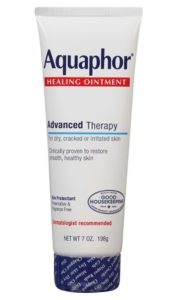Laser Tattoo Removal Aftercare Instructions
 After treatment, your treated area may seem like a superficial burn wound. Many patients experience immediate whitening of the area, plus bruising, swelling, blistering, and scabbing. Here are some basic guidelines to handling these side effects and achieving excellent laser tattoo removal results:
After treatment, your treated area may seem like a superficial burn wound. Many patients experience immediate whitening of the area, plus bruising, swelling, blistering, and scabbing. Here are some basic guidelines to handling these side effects and achieving excellent laser tattoo removal results:
- For the first 3 days after treatment, keep the treated area bandaged with sterile gauze and protected with a thin layer of antibiotic or healing ointment. After 3 days, keep the treated area clean and dry during the healing process. If necessary, clean the area gently with mild soap and water and pat dry.
- Blistering is common after laser treatment and is a part of the natural healing process. Do not be alarmed by blisters, but do protect the area and apply an ointment for at least 24 hours after the blisters have popped.
- You may apply cool compresses as necessary for 24 hours after treatment to help reduce discomfort and inflammation. You may take regular Tylenol, but avoid aspirin (as it can increase the risk of bruising or bleeding).
- Do not pick any scabs that form. This step is very important to prevent scarring. Avoid any activity (such as shaving) in the treated area that may cause scabs to remove.
- Feel free to shower 2 hours after treatment, but avoid high water pressure hitting the treated area. Also, do not soak the treated area until all scabs and blisters have completely healed – that means no baths, hot tubs, or swimming to prevent the chance of infection.
- Exercise is generally safe after treatment, as long as all other aftercare instructions have been followed.
- Wear a sun block of SPF 25 or higher over the area for 3 months following treatment. Avoid wearing makeup or creams near the treated area for the first 2 days after treatment.
- Itching is very common due to the dehydrating effect of the laser. Use Aquaphor, Vitamin E ointment, or hydrocortisone cream to moisturize the area as it heals.
- If the area looks infected (honey-colored crusting, oozing, spreading redness) or you have an extreme reaction, immediately contact medical professionals for help.
Healing is usually complete in about 4 to 8 weeks, depending on the patient’s aftercare, immune system, and level of treatment.

